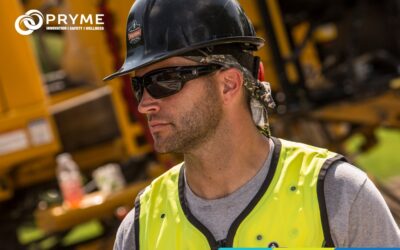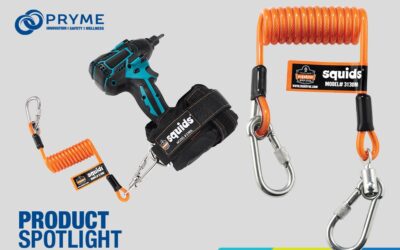Dropped Objects Prevention: The Top 10 Causes of Dropped Objects

In the publication, “Managing the Risk of Falls at Workplaces: Code of Practice”, Regulation 34-38 of the Workplace Health and Safety Act 2011, requires employers to implement controls to minimise risks so far as is reasonably practicable. Although this is the case, the Code does little in the way to account for hazards posed by small falling objects.
In contrast, Safe Work Australia’s “Falling Objects Fact Sheet” does provide some guidance to control small falling object hazards, for example requiring all tools and materials be tethered or otherwise secured while working at heights.
To ensure safety from falling objects, understanding the primary causes of incidents can help conduct thorough risk assessments before commencing a job. According to Drops Online the following reasons are the top ten causes of falling object incidents at the workplace.
Procedures & Systems
- Inadequate Risk Assessment – A pre-assessment to identify potential hazards is often crucial and can prevent the risk of an incident occurring. A risk assessment can identify potential energy sources, catalogue tools and equipment required for the job, and create a heightened awareness amongst staff about the potential dangers of falling objects.
- Lack of Planning – In addition to risk assessments, very often management of the change process isn’t in place to identify and control risk from changes occurring at the workplace that may create new and unidentified areas of risk
- Previous Jobs – A previous job conducted on the work site, can leave behind tools, loose objects, and equipment that current job staff are unaware of. Unidentified, these can pose unexpected risks.
- Inadequate repairs & Inspections – Schedules times for inspections and maintenance repairs can help identify corrosion, damages, wear and tear as well as structural and equipment faults or damage before they become a falling object risk.
Tools, Equipment & Structural Faults
- Structures & Fittings – Degradation of fittings, incorrect selection, and incorrect fitting methods will lead to structural faults. Failed fixtures and fittings will often dislodge themselves if not inspected.
- Damaged Tools & Equipment – Improvised or homemade tools, equipment that is uncertified, or even damaged tools and equipment from previous jobs and incidents can fail or break unexpectedly. Timely inspection and replacement before each job can reduce this risk.
- Loose Objects – Manual tools, hand tools, debris, communication, and writing equipment that is unsecured or untethered can be accidentally dropped.
Task Planning
- Environmental Conditions – Wind, sea motion, rain, mud, heat, and sand can all change work conditions dramatically, particularly on oil rigs, and mines, and working at heights compromises the stability of tools, equipment, and structure.
- Collisions & Snagging – Lifting, Moving Equipment, and tag lines can all cause snagging or collision and the impact can create debris or breakage.
- Human Error – Inadequate training or awareness of hazards, operator error, complacency, neglect, and lack of reporting SOPs can result in compromised safety. Toolbox sessions including an outline of falling object hazards and schedules for training or reporting can help reduce this risk.
Pryme in partnership with leading small falling objects prevention product manufacturer Ergodyne has recently launched a comprehensive range of Ergodyne Tool Tethering solutions to help keep workplaces safer from falling objects. Worksites can now create a Drop Free Zone.
RELATED: The Risk of Dropped Objects On Site – Dropped Object Consequence Calculator
Categories
Recent Posts
- Innovation in Knee Protection: The Proflex® Hinged Knee Pads
- Celebrate Australian Made Week 2024 with Maxiblock Sunscreen
- MATES BIG LAP 2024: Get moving for your mates
- Understanding Heat Stress Risks for Outdoor Workers in the Tropics
- How Australian Businesses Can Prepare for Extreme Heat Events: Insights from KPMG’s Heat Report
Brands
- Ergodyne
- Sqwincher
Sqwincher is an electrolyte enhanced beverage for effective hydration and is the recognised leader in providing hydration solutions to hot workplaces, to help reduce heat related illness and accidents. Keep your workers safe and productive with Sqwincher hydration that works.
- Maxiblock Sunscreen






